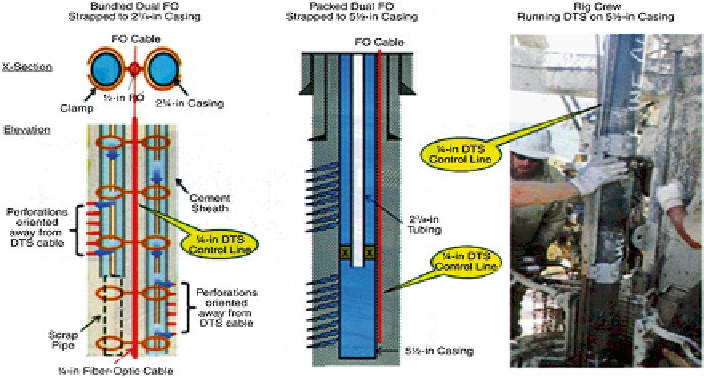Environmental Engineering Reference
In-Depth Information
Fig. 14.5
DTS fiber deployment in different casing configurations. Courtesy SPE 163694
Types of DTS/DAS Installations
Essentially a fiber optic cable may be installed in a well either permanently, semi-
permanently, or retrievably. In a permanent installation an armored cable is run
outside the casing, strapped in place and cemented along with the casing. This
method is only possible with new wells but it is applicable for vertical, deviated,
and/or horizontal wells. Besides fiber optic lines, there will be a permanent magnet
rod running inside the jacket of the armored cable. The magnetic rod is used to
locate the optic fiber and allow a perforating gun to be oriented so as to avoid dam-
aging the fiber optic cable.
In a semi-permanent installation, the fiber optic cable is pushed through the well
and has the advantage that it can later be replaced if necessary. In a vertical well
typically the cable is fed through the tubing. In deviated or horizontal wells a pro-
tected fiber optic cable is run built into coiled tubing.
Cables can be run in either single or double mode as illustrated in Fig.
14.6
.
Type A and B involve a single line, which cannot be calibrated to accurate tem-
perature although very small temperature changes can be detected without
knowing the absolute value. The resolution is as high as other types and can
detect to within 0.1 ᄚF. The pressure gauge in type B is a solar optic pressure
gauge which works based on displacement of a diaphragm at different optical
frequency. The displacement with time is then converted to pressure. DTS
installation Type C allows for calibration via two temperature readings at the
same depth.

Search WWH ::

Custom Search